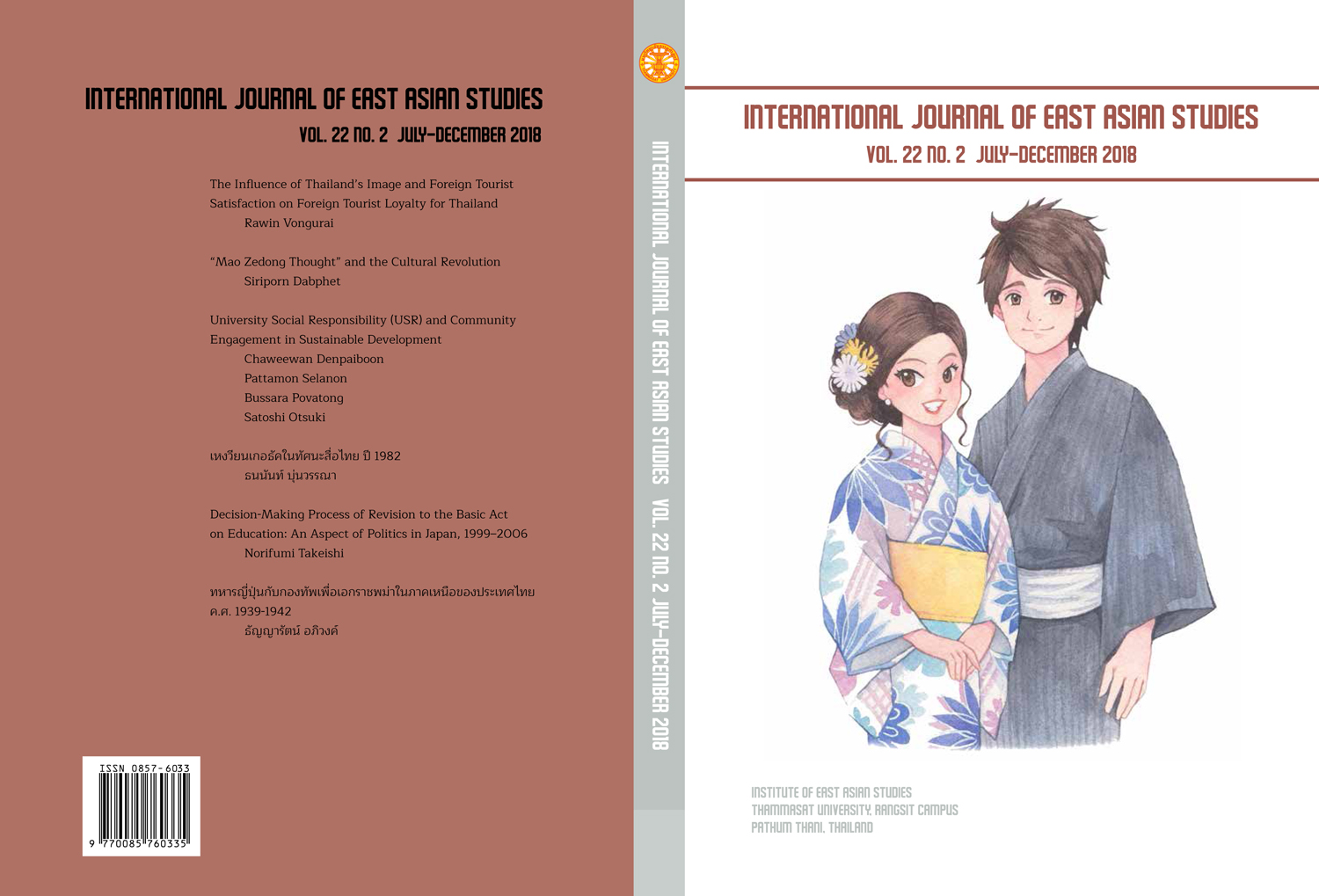The Japanese Military and the Burma Independence Army in Northern Thailand, 1939-1942
Keywords:
Japanese, Second World War, Burma Independence Army, Northern Thailand, Burmese migrantsAbstract
This article examines the cooperation between the Japanese military and Burmese nationalists in Thailand in establishing the Burma Independence Army (BIA) in Thailand during the Second World War. It focuses on the role of the Japanese military and Burmese nationalists who lived in Northern Thailand, which hosted numerous Burmese migrants. This study found that the Japanese military in Thailand attempted to inflame a sense of Burmese nationalism and to use the same strategies as they had used in British Burma in order to recruit Burmese migrants for the BIA. The problem of recruiting Burmese migrants was that their sense of Burmese nationalism was not as strong as the Burmese who lived in British Burma. For this reason, the Japanese military not only turned to Burmese monks and the social networks of local Burmese nationalists to persuade local Burmese to join the BIA but also made use of the legal status of British Burmese subjects in order to increase the number of those conscripted.
References
Aung-Thwin, M. (2011). The return of the Galon King. Athens: Ohio University.
Aung-Thwin, M. (2012). Remembering kings: Archives, resistance and memory in colonial and post-colonial Burma. In R. Waterson & K. Kian-Woon (Eds.), Contestations of memory in Southeast Asia (pp. 53-82). Singapore: NUS Press.
Cady, J. F. (1981). Our Burma experince of 1935-1938. In J. P. Ferguson (Ed.), Contributions to Asian Studies: Volume 16 essays on Burma. Leiden: E. J. Brill.
Charney, M. W. (2010). A history of modern Burma. Cambridge: Cambridge University Press.
Larkin, E. (2003). The self-conscious censor: Censorship in Burma under the British, 1900-1939. Journal of Burma Studies, 8(1), 64-101.
Maung, M. (1969). Burma and General Ne Win. Rangoon: Religious Affairs Department.
Maung, M. (1989). Burmese Nationalist Movements 1940-1948. Hong Kong: Kiscadle.
Mya Doung Nyo. (1992). The Thirty Comrades. Rangoon: Guardian.
Prager, S. (2003). Coming of the “future king”: Burmese Minlaung expectations before and during the Second World War. Journal of Burma Studies, 8, 1-32.
Rajshekhar. (2006). Myanmar’s Nationalist Movement (1906-1948) and India. New Dehli: South Asian Publishers.
Ricklefs, M. C., Lockhart, B., Lau, A., Reyes, P., & Aung-Thwin, M. (2010). A New History of Southeast Asia. Basingstoke: Palgrave Macmillan.
Seekins, D. M. (2007). Burma and Japan since 1940: From ‘Co-prosperity’ to ‘Quiet Dialogue’. Copenhagen: NIAS.
Tatsuro, I. (1981). Sono na wa Minani Kikan [The Minami Organ] (Tun Aung Chain, Trans.). Rangoon: Translation and Publications Department.
ทวี ธีระวงศ์เสรี. (2524). สัมพันธภาพทางการเมืองระหว่างไทยกับญี่ปุ่น. กรุงเทพมหานคร: ไทยวัฒนาพานิช
พัชรี สิโรรส. (2544). ความสัมพันธ์ไทย-ญี่ปุ่น ดูจากสนธิสัญญาและข้อตกลงในรอบ 100 ปี. กรุงเทพฯ: สำนักพิมพ์มหาวิทยาลัยธรรมศาสตร์.
ศักดิ์ รัตนชัย. (2535). คู่มือประวัติศาสตร์ศึกษา เรื่องยุทธเวหาป้องกันนครลำปาง. เชียงใหม่: ภาคเหนือนิวส์-เสียงโยนก.


